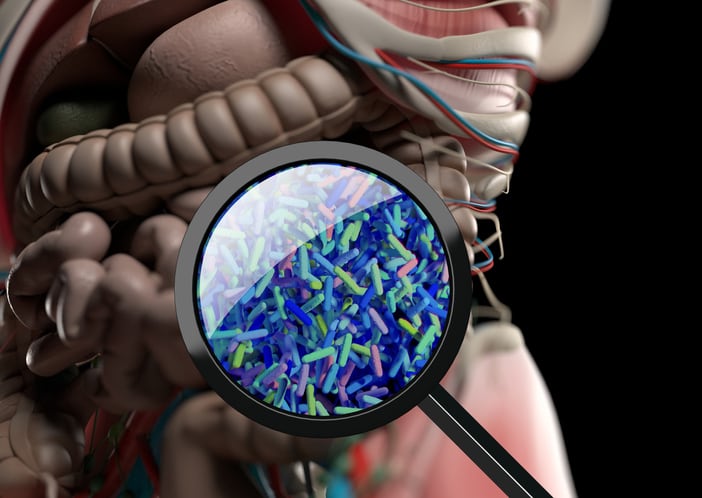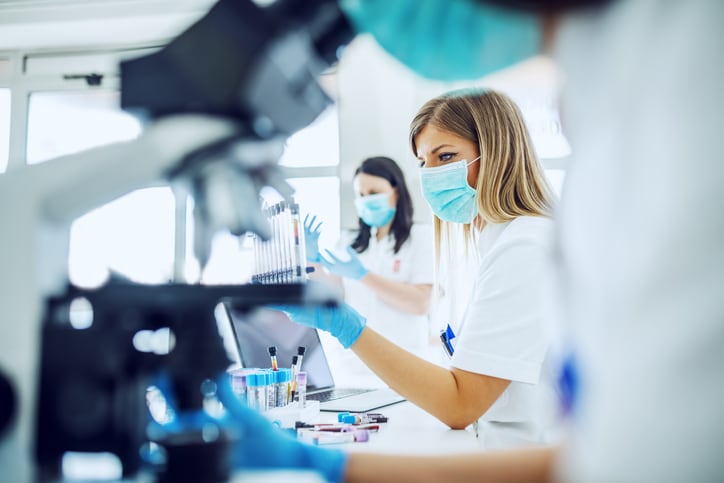The innovation could prove significant in understanding the gut microbiome, given the level of difficulty in collecting gut microbes.
Traditionally, researchers have collected stool samples or conducted procedures such as a colonoscopy or endoscopy to collect gut microbes. However, these methods can’t capture all the microorganisms in the upper GI tract, plus the idea of colonoscopies are not appealing to most patients.
The ingestible self-polymerizing system
To avoid these deterring procedures, researchers at the Danish National Research Foundation and Villum Foundation’s Center for Intelligent Drug Delivery and Sensing Using Microcontainers and Nanomechanics (IDUN) at the Technical University of Denmark developed a device that is designed to be swallowed and then eliminated.
The researchers designed a self-polymerizing reaction system implanted into tiny hollow cylinders to entrap gut microbiota and biomarkers. The reaction system consisted of poly(ethylene glycol) diacrylate monomer, iron chloride and ascorbic acid. From there, the cylindrical microdevices were packaged inside miniature gelatin capsules, coated with a protective layer to prevent the devices from being digested in the stomach’s acidic environment.
An orally ingestible microdevice is loaded with the self-polymerizing reaction mixture to entrap gut microbiota and biomarkers. This polymerization reaction mixture is activated in aqueous environments, such as fluids in the intestinal lumen, and causes site-specific microsampling in the gastrointestinal tract. The sampled microbiota and protein biomarkers can be isolated and analyzed using high-throughput multiomics analyses, which is an approach scientists use to analyze complex biological big data to find novel associations between biological entities, pinpoint relevant biomarkers and build elaborate markers of disease and physiology.
Snapshot
The enteric-coated capsules were fed to the rats. By design, the microdevices remained protected in the stomach, but disintegrated in the small intestine’s more-neutral pH, which released the microdevices.
Exposure to intestinal fluid caused the cylinders’ chemical cargo to polymerize, forming a hydrogel that trapped microbes and protein biomarkers in its surroundings, essentially freezing these microbes in time.
“Upon capsule disintegration, the microdevices were released in the presence of luminal fluids (in the small intestine region), where iron chloride reacts with ascorbic acid, to initiate poly(ethylene glycol) diacrylate polymerization via a free radical mechanism. Upon retrieval of the microdevices, gut microbiota was found to be entrapped in the polymerized hydrogel matrix, and genomic content was analyzed via 16s rRNA amplicon sequencing,” the authors explained.
The devices were then surgically removed from the rates. However, the researchers noted that down the road this step would be replaced by natural elimination in future. High-throughput sequencing studies showed that the bacterial population the devices captured closely resembled that of the gut.
The researchers were also able to show that intestinal mucus could set off these tiny cylinders to deliver biologics, like insulin, to cells in a petri dish. Additionally, the report noted that the capsules did not cause inflammation or toxicity.
Conclusion
The researchers said the results show that the bacterial composition recovered from the microdevices closely resemble the bacterial composition of the gut microenvironment to which the microdevice is exposed. “Further, histological assessment showed no signs of local tissue inflammation or toxicity. This study lays a strong foundation for the development of untethered, non-invasive microsampling technologies in the gut and advances our understanding of host–gut microbiome interactions, leading to a better understanding of their commensal behavior and associated GI disease progression in the near future.”
The research team added that this self-polymerizing system for sampling of gut microbiome could help scientists better understand host-microbiome interactions and lead to personalized gut therapies in the future.
Source: American Chemical Society
2020 doi.org/10.1021/acsnano.0c05426
"An Ingestible Self-Polymerizing System for Targeted Sampling of Gut Microbiota and Biomarkers"
Authors: L. Chen et al




